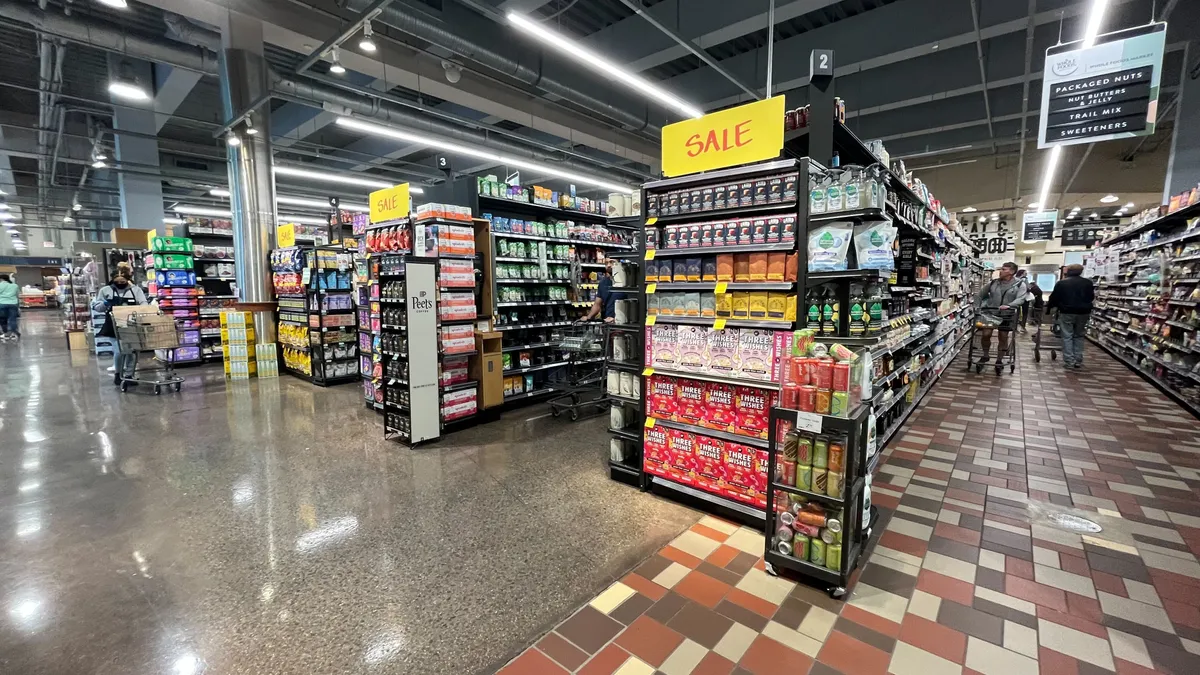Dive Brief:
- Retailers participating in a panel discussion at Saint Joseph’s University last week discussed the various challenges of grocery e-commerce, according to Supermarket News. These challenges include offering platforms that inspire consumers, executing orders consistently at a high level, replicating products’ in-store success online and optimizing inventory to meet both in-store and online demand.
- Participants said that e-commerce retailers will have to up their service to compete with brick-and-mortar, service-oriented stores that offer highly customized products and experiences.
- “When you look at this [e-commerce] space, it can be really complicated,” said Donna Zambo, director of digital commerce, e-commerce and digital innovation for Wakefern Food Corp. “But it has to be easy for the customer.”
Dive Insight:
The panelists at last week’s discussion, which included one retailer/wholesaler (Wakefern) and two grocery e-tailers (Peapod and FreshDirect) offered an interesting and diverse look at the difficulties of grocery e-commerce.
Wakefern, which operates ShopRite and Price Rite stores in the northeast, noted the challenges of relying on shelf inventory to meet two demand streams: online and in-store. Donna Zambo, Wakefern’s director of digital commerce, e-commerce and digital innovation, said that when a category’s online sales reach 10%, pulling products from shelves becomes inefficient and disruptive. She said Wakerfern is currently investigating alternative inventory systems.
No doubt, carving out extra space inside a store for online inventory can be challenging. Limiting square footage to impact and high demand items is one solution. Some retailers are freeing up space in their backrooms through direct-to-shelf replenishment and other efficiencies. In England, where e-commerce is more developed than in the U.S., retailers like Tesco and Sainsbury’s use so-called “dark stores” to hold online inventory.
E-tailers Peapod and FreshDirect, meanwhile, spoke to the challenges of meeting consumers’ very exact demands for e-commerce. Online platforms, noted Linda Crowder, senior director of Peapod Interactive, often don’t do enough to inspire consumers with meal suggestions, recipes and other solutions. Millennials, she noted, define convenience in terms of solutions like these, and not necessarily in the traditional terms of price and time saved.
Even those retailers that do offer a smart, sophisticated platform and ordering systems, Crowder observed, can see it all unravel with one carton of broken eggs.
Accuracy, efficiency and sophistication: These are all values that have to work together in order for retailers to leverage their e-commerce platforms against the likes of Amazon, Wal-Mart, and the many other grocery competitors entering the space.










